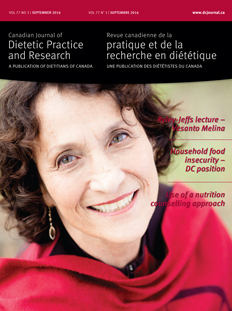Abstract
Purpose: A small but growing body of peer-reviewed research suggests that school gardens can play a role in building community food security (CFS); however, to date little research exploring the role of school gardens in supporting CFS is available. This paper begins to address this gap in the literature.
Methods: A qualitative, exploratory, single-case study design was used. The focus of this case study was the school food garden at an elementary school in the River Valley, Nova Scotia, school community.
Results: Results provide useful information about potential CFS effects of school gardens in addition to the environmental effects on school gardens important to their effectiveness as CFS tools. Findings suggest children gained food-related knowledge, skills, and values that support long-term CFS. A local social and political landscape at the community, provincial, and school board level were key to strengthening this garden’s contributions to CFS.
Conclusions: We support Dietitians of Canada’s nomination of school gardens as an indicator of CFS with theoretical and practical evidence, underscore the importance of a supportive environment, and need for further research in this area. Health professionals and community organizations provide critical support, helping to weave gardens into a greater movement towards building CFS.
Résumé
Objectif. Un ensemble petit, mais croissant de recherches révisées par des pairs donne á penser que les jardins scolaires peuvent jouer un rôle pour assurer la sécurité alimentaire de la communauté (SAC); cependant, à ce jour, peu de recherches sur le rôle des jardins scolaires dans le soutien de la SAC ont été menées. Cette étude vise à combler cette lacune dans la littérature.
Méthodes. Une méthodologie d'étude de cas unique, exploratoire et qualitative a été utilisée. L'axe de cette étude de cas était le potager d'une école élémentaire de la collectivité scolaire de River Valley, en Nouvelle-Écosse.
Résultats. Les résultats ont fourni des renseignements pertinents sur les effets potentiels des potagers scolaires sur la SAC, ainsi que sur les effets environnementaux des potagers scolaires qui sont importants pour leur efficacité en tant qu'outils de SAC. Les rèsultats suggèrent que les enfants ont acquis des connaissances, des compétences et des valeurs relatives à l'alimentation qui soutiennent la SAC à long terme. Une implication politique et sociale à l'échelle du conseil scolaire, de la province et de la communauté a été un élément clé du renforcement de la contribution de ce jardin à la SAC.
Conclusions. Nous appuyons la désignation par Les diététistes du Canada des potagers scolaires en tant qu'indicateurs de la SAC selon des données probantes théoriques et pratiques, et nous soulignons l'importance d'un milieu favorable et la nécessité de mener d'autres recherches dans ce domaine. Les professionnels de la santé et les organismes communautaires offrent un soutien majeur en aidant à intégrer les potagers à un plus vaste mouvement visant la SAC.



